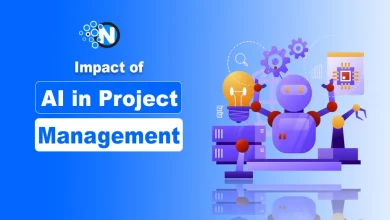What is Machine Learning and Its Implementation for Business

Machine learning is a subdivision of artificial intelligence. It is the science of computer programming to upgrade their presentation through data learning. Overwhelming development has been built in recent years. Driving machine learning into the limelight of dialogs surrounding turbulent technology. It customs statistical techniques to enable computers to learn and make decisions.
The capability to alter data into conversant decisions has made machine learning a dynamic tool for the business globe. Machine learning is a vital skill for businesses. Several companies implement it to increase visions, automate procedures, and make healthier decisions. Companies from numerous industries stimulate machine learning to enhance efficiency, lessen prices, and attain extension.
What is Machine Learning?
Machine learning is an application and is a subsection of Artificial Intelligence. It is the study of fabricating machines human-like in their performance and decisions. This study allows these machines to acquire and develop their programs. This is completed with minimum human involvement, i.e., no obvious programming.
The learning evolution is automated and upgraded based on the practices of the machines all over the process. Good eminence data and various algorithms are fed to shape ML models to train the machines on this data. The choice of algorithm hinges on the sort of data at hand and the activity that desires to be automated. This article will define machine learning and its implementation for business.
Types of Machine Learning
There are three main types:
Supervised Learning
It is a session of problems that uses a model to study the drawing between the input and goal variables. Applications containing the exercise data recitation of the various input and goal variables are supervised learning tasks.
Unsupervised Learning
In this type, the model attempts to learn by itself, identify patterns, and abstract the contacts between the data. Unsupervised learning functions only on the contribution variables. There are no target variables to guide the learning process.
Reinforcement Learning
In this type, a mediator functions in a situation based on the response from the environment in which it operates. The response could be constructive or adverse. The mediator then goes ahead with the situation based on the response obtained.
Machine Learning Step by Step
- Collection of data
- Formulating that data
- Selecting a model
- Instruction
- Assessment
- Hyperparameter Fine-tuning
- Forecast
Future of Machine Learning

Machine learning is a continuously emerging field that is prejudiced by several aspects. It is challenging to predict its concise future. However, it is expected to continue as a main strength in many science, technology, and business fields. It will remain the major donor to technological progression. The formation of intelligent aides, personalized health maintenance, and IoT automobiles are probable to utilize machine learning. Significant world problems may be addressed via machine learning, such as poverty and climate change.
Business and Machine Learning
Machine learning is a crucial technology for businesses, enabling them to gain visions, automate processes, and make healthier decisions. While implementing ML requires careful planning, data analysis, and expertise. Companies across numerous businesses are leveraging machine learning to improve competence, lessen prices, and achieve growth.
The future of machine learning in business grips exhilarating openings. It includes automated ML tools, generative and explainable AI, on-device computing, human-machine collaboration, and federated learning. Advancements in low-data regimes are also feature of ML. Companies use machine learning to rationalize their procedures and gain a modest advantage.
Implementation of Machine Learning for Business
The implementation of ML has developed a vital technology for the business world. Launching machine learning within any group and business needs planning and teamwork. Machine Learning has an astonishing ability to analyze massive amounts of data. It begins with an idea and moves on to implementation when technology addition or conversion happens, followed by continuous monitoring and improvement. The basic stages of structuring an ML implementation strategy are described below:
Setting up a Vision
The most important step in implementing new technology is setting up a vision. It is not any different for machine learning. IT experts and Businesses should work jointly to setting up a vision and describe vibrant objectives for an ML implementation. The objectives might be improving the precision of the fraud detection system to improve overall operational efficiency. But it requires business and IT orientation to work towards a common goal.
Measuring success with a clear understanding of your goal is easier. You’ll find the most common use cases by looking for labor-intensive and repetitive places.
Outline Data Necessities
Gathering, keeping and feeding the system massive amounts of data is vital to refining the accuracy of ML algorithms. Data management processes need to be established to provide an initial set of historical data to train the ML processing system and For continuous data insertion to train and improve the model’s accuracy.
Infrastructure will be required to gather new data beyond the initial model-training phase. Data requirements must be established for gathering and storing data. But also to ensure that the available data is reliable, secure, and steady for continuous improvement.
Set up Roles and Responsibilities
Setting up clear roles and responsibilities is fundamental for implementing machine learning in any organization. A fruitful technology implementation needs integration throughout the organizational landscape tactically led by an active management role. Commence with creating cohesive solution teams with representatives from IT, advertising, sales, and other required shareholders. They must meet frequently during the venture to evaluate progress and ensure adequate coordination with their respective groups.
Establish a Change Management Process
Technology insertions often flop due to the need for more suitable change management processes. Training and change management are two key features of the despatch and undertaking of any significant innovation effort. ML implementation does not differ in that aspect. Change management involves observing and re-engineering existing business processes based on the rationalized business model.
Moreover, training agendas that cover task objectives, product landscapes as well as newly created business procedures. They are imperious to create communal support and cognizance for the task and its objectives and to upsurge efficiency and usage.
ML Models Observing and Legitimize
To ensure that ML models remain observed, legitimized and eventually result in business value. They require to be regularly upgraded, rehabilitated and authenticated. To reach this, organizations must confirm that the ML implementation plan can update its standards and integrate improved amounts of data. Assessing the feat of an application could be set up by computing its business worth. It is also imperative to scale how the ML algorithm affects wider business achievements.
Conclusion
Machine learning is the science of programming computers to enhance their presentation by learning from data. Substantial progress has been fabricated in recent years, driving machine learning into the spotlight of conversations. ML’s capability to comprehend patterns and to instantly see anomalies makes it a valuable tool for detecting fraudulent activity.
The ability to transform data into informed decisions has made implementing machine learning a vital tool for the business world. ML controls the customer recommendation engines intended to enhance the client experience and deliver personalized experiences. Businesses need to plan and manage technology disruptions carefully, and ML is no different.




